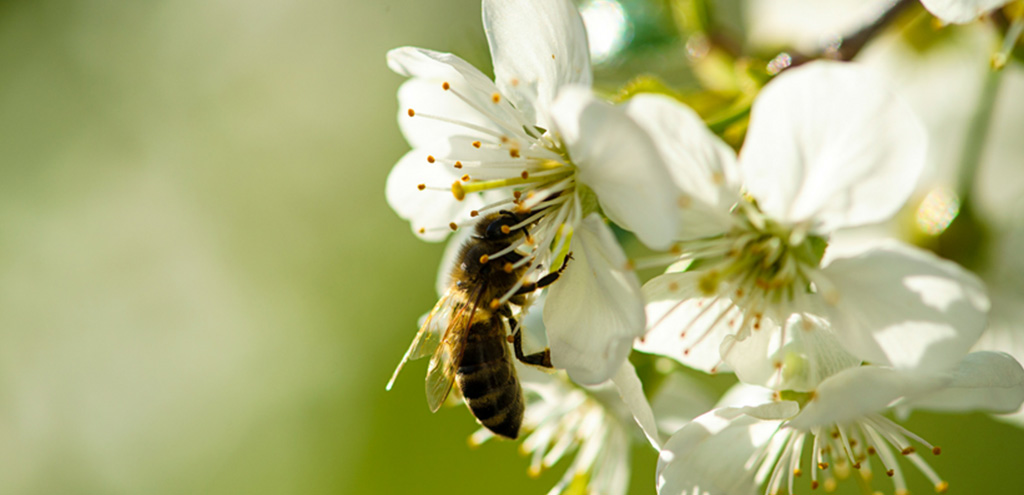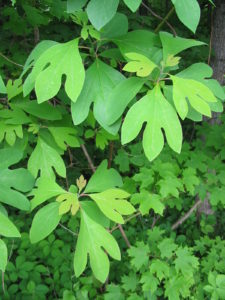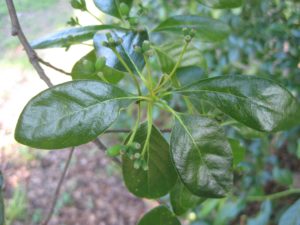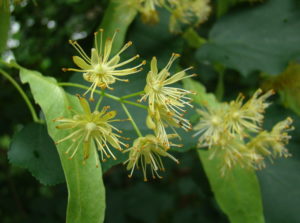THE LEAFLET

Bees n Trees: Celebrate Pollinator Week with These Helpful Trees
First up, what exactly is a pollinator? Just bees? Not exactly. Butterflies, bees, birds, moths, bats, beetles, flies, and more. Any animal or insect that visits a flower can move pollen from one flower to another. Even the wind is a pollinator!
Pollinator plants and trees do a lot for the environment they’re in, including attract pollinators necessary for growing vegetable gardens and fruit trees, improve air quality, reduce stormwater runoff, improve habitat (shelter and food) for wildlife, increase the District’s biodiversity (variety of plant and animal species), and not to mention they add beauty (and value!) to your home.
We’ll focus on a few types trees, because that’s who we are, but there are so many native pollinator flowers and plants out there for you to add to your garden, community garden plot, or even a pot on your stoop.
So in honor of Pollinator Week last week, invite those helpful critters to your yard with:
Oaks (Quercus)
Don’t mind which pollinators you attract? The oak is for you, as this stately and storied tree supports over 500 kinds of butterflies and moths. This genus of trees is not only our national tree, but they’ve long been prized for their shade, beauty, and lumber. We have a ridiculous amount of oaks available through RiverSmart Homes or our Tree Rebate program including D.C.’s official tree the scarlet oak, the tough swamp white oak, the Willow Oak with its unusual leaves, the dense northern red oak, or the towering and abundant pin oak.
 Pawpaw (Asimina triloba)
Pawpaw (Asimina triloba)
Beetles and flies fancy the pawpaw and you will too! Home to the largest native edible fruit with quite a cult following, the regional pawpaw is a small tropical tree with lustrous dark green leaves. Better yet? Deer don’t eat pawpaw leaves. Plant one and enjoy the fruits of your labor (literally!) through our residential planting programs.
 Sassafras (Sassafras albidum)
Sassafras (Sassafras albidum)
Sassafras trees don’t just have a fun name, they are critical to a particular pollinator. Sassafras trees are one of the few trees the spicebush swallowtail caterpillar feed on. With three different types of leaf shapes, as well as bark and roots that were used to make medicine, tea, and root beer, sassafras trees are a welcome addition to any space. This tree is also available through our residential planting programs.
American Linden (Tilia americana)
For a tree with many common names (it’s also known as the American basswood or lime) it has just as many honey bee pollinators. With nectar irresistible to honey bees, some beekeepers even market basswood honey! This stately shade tree has delicate pea-shaped fruits hanging from wing-shaped bracts. Look for them along Embassy Row on Massachusetts Avenue – D.C.’s historic linden corridor – or plant some on your property with our residential planting programs.
 Black Tupelo (Nyssa sylvatica)
Black Tupelo (Nyssa sylvatica)
The black tupelo, also known as the black gum, has colorful, fiery leaves to dazzle in your fall landscape and attract bees. Bees especially love the pollen-packed flowers, which they eat to make their famous Tupelo Honey. Attract bees and birds to your yard by planting one of these through our residential planting programs.

